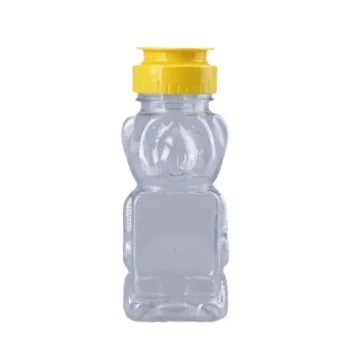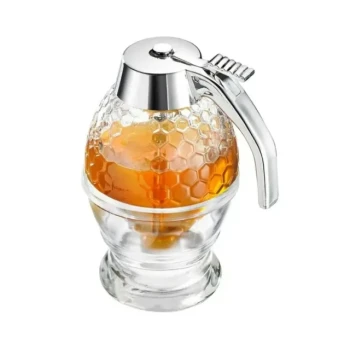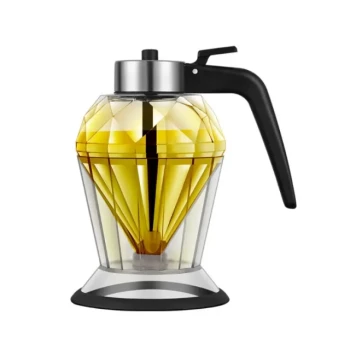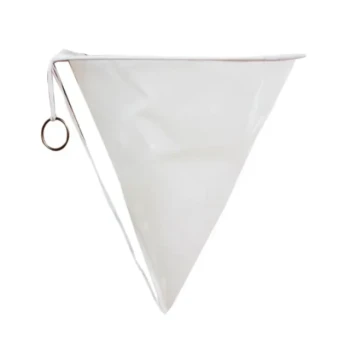The primary benefits of squeeze bottles for honey are user convenience and dispensing control. Their flexible plastic design, typically paired with a specialized flip-top cap, allows for a clean, easy, and mess-free application that is difficult to achieve with traditional wide-mouth jars.
While glass jars are the standard for preserving honey's absolute purity and artisanal image, plastic squeeze bottles deliver unmatched practicality, durability, and waste reduction for everyday use.
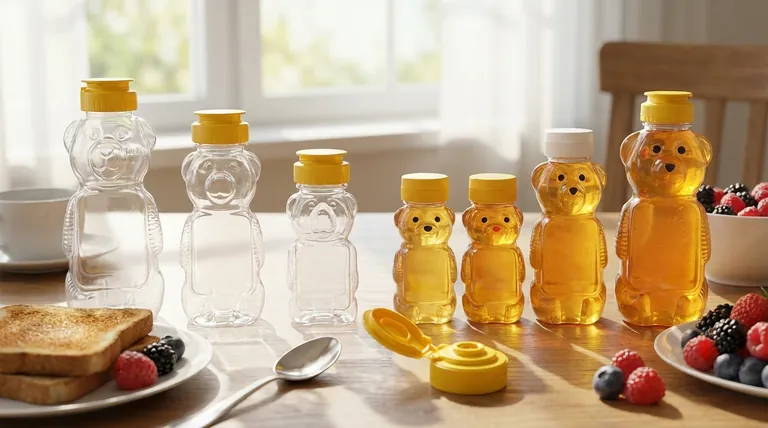
The Core Advantages of Squeeze Bottles
Squeeze bottles are engineered specifically to solve the challenges of handling viscous liquids like honey. Their benefits stem directly from their material and design.
Unmatched Dispensing Control
The combination of a flexible plastic body (often LDPE or PET) and a purpose-built flip-top cap is the key. This design allows users to apply precise pressure for a controlled flow.
This feature virtually eliminates the drips and sticky messes commonly associated with spooning honey from a jar, making it ideal for direct application on food.
Maximizing Product Use
The flexible nature of a squeeze bottle allows the user to exert force to get nearly every last drop of honey out of the container.
This contrasts sharply with rigid glass or plastic jars, where a significant amount of honey can remain stuck to the sides and bottom, leading to product waste.
Superior Durability and Safety
Plastic is inherently shatter-resistant, making squeeze bottles a safer option in kitchens, especially in households with children.
Their lightweight and durable nature also provides a distinct advantage during shipping, reducing both transportation costs and the risk of product loss due to breakage.
How Squeeze Bottles Compare to Other Options
To understand the value of squeeze bottles, it's essential to compare them directly against the two other common packaging formats: glass jars and rigid plastic jars.
Squeeze Bottles vs. Glass Jars
Glass jars are perceived as a premium packaging choice. Their primary benefits are rooted in material purity and presentation.
Glass is completely non-reactive and odorless, ensuring that it will not impart any taste or chemical compounds into the honey. Its high transparency also beautifully showcases the honey's color and clarity.
The trade-off is convenience. Glass jars require a separate utensil, are heavy, and can break. They excel at preserving quality but fall short on ease of use.
Squeeze Bottles vs. Plastic Jars
Rigid plastic jars offer many of the same durability and lightweight benefits as squeeze bottles. They are a cost-effective and safe alternative to glass.
However, they share the same dispensing drawback as glass jars. They require a twist-off lid and a spoon or knife for serving, failing to provide the one-handed, mess-free convenience that defines the squeeze bottle experience.
Understanding the Trade-offs
Choosing a packaging type is a decision based on priorities. Squeeze bottles are a fantastic solution, but they come with specific considerations.
Product Integrity vs. Convenience
While modern food-grade plastics like PET provide an excellent barrier, glass remains the gold standard for preventing any interaction with the product. For long-term storage or for honey connoisseurs concerned with absolute purity, glass is theoretically superior.
Market Perception
Packaging sends a powerful message. Glass jars often signal an artisanal, small-batch, or premium product.
Squeeze bottles are strongly associated with convenience, value, and family-friendliness. This makes them a dominant choice for mainstream brands in large retail environments.
The Dispensing Cap
The effectiveness of a squeeze bottle hinges on its cap. A well-designed cap with a precise shut-off valve prevents leaks and ensures a clean cut-off. A poorly designed cap can negate the bottle's primary benefit by leaking or becoming clogged.
Making the Right Choice for Your Goal
The best packaging choice depends entirely on your priority, whether you are a producer or a consumer.
- If your primary focus is everyday convenience and mess-free use: The squeeze bottle is the unmatched choice for its control and ease of application.
- If your primary focus is showcasing artisanal quality and ensuring maximum purity: The classic glass jar remains the best option for its premium look and non-reactive nature.
- If your primary focus is durability and low shipping cost: Both plastic squeeze bottles and plastic jars are excellent, with the final choice depending on whether dispensing convenience is a priority.
Ultimately, the ideal honey container is one that aligns the needs of the consumer with the story of the product itself.
Summary Table:
| Benefit | Key Feature | Ideal For |
|---|---|---|
| Dispensing Control | Flexible body & flip-top cap | Mess-free application on food |
| Maximized Use | Squeezable design | Getting every last drop, reducing waste |
| Durability & Safety | Shatter-resistant plastic | Kitchens with children, cost-effective shipping |
Ready to upgrade your honey packaging with high-quality, wholesale squeeze bottles?
As a leading wholesale supplier to commercial apiaries and distributors, HONESTBEE provides durable, food-grade squeeze bottles designed for superior performance and customer satisfaction. We help you reduce waste, improve the user experience, and streamline your packaging operations.
Contact our packaging experts today to discuss your bulk supply needs and get a quote!
Visual Guide
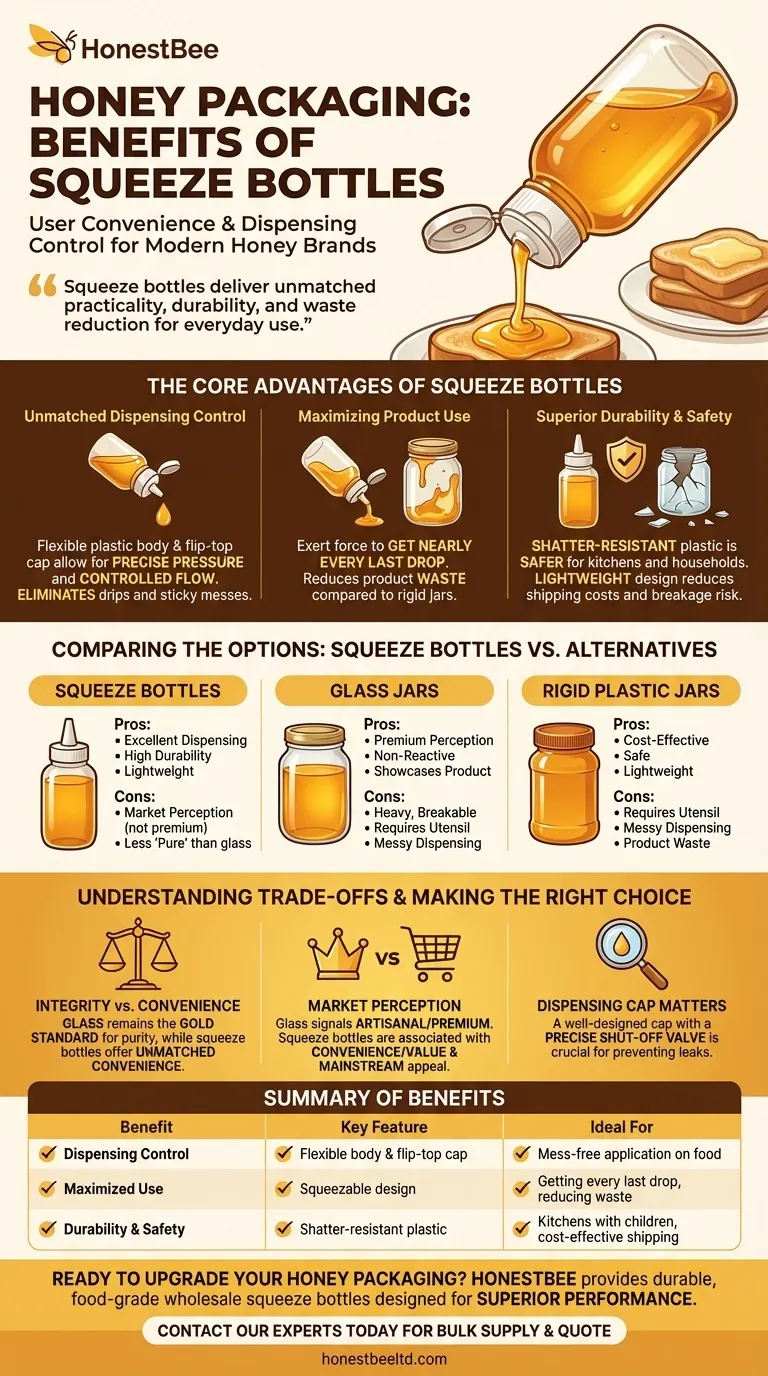
Related Products
- Classic Honey Bear Jars with Flip Top Dispensing Cap for Liquid Sweeteners
- Inverted Squeezable Honey Jar with No Drip Flip Top Cap for Easy Pouring
- Honeycomb Style Drip Free Honey Dispenser
- Premium Diamond-Faceted Glass Honey Dispenser
- Pneumatic Double Nozzle Honey Filling Bottling Packaging Machine
People Also Ask
- What packaging issues can arise from excess moisture in honey? Prevent Container Failure & Spoilage
- Can honey go bad in the heat? Protect Your Honey's Quality and Flavor
- How does honey get packaged? Preserve Quality and Boost Appeal
- What is done with the honey after extraction and filtering? From Purification to Perfect Packaging
- What are the common types of honey packaging? A Guide to Glass, Plastic, Pouches & Tins
